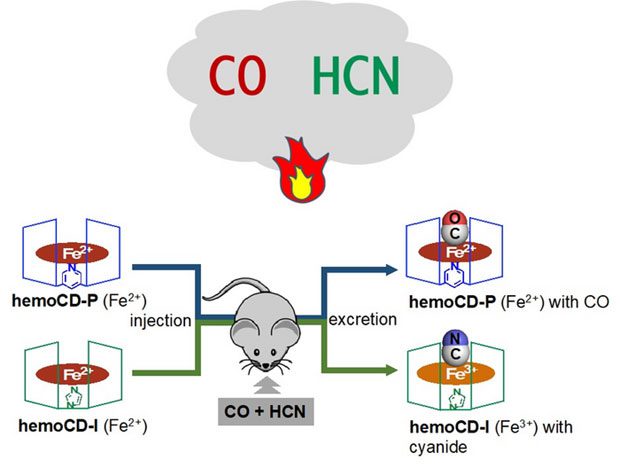Japanese scientists have discovered a compound that could save the lives of patients suffering from smoke inhalation during fires. The efficacy and safety of this compound have been confirmed through tests conducted on mice.

The efficacy and safety of this compound have been confirmed through tests conducted on mice. (Source: EurekAlert).
During research on artificial hemoglobin, Professor Hiroaki Kitagishi, an organic chemistry professor at the Doshisha University Faculty of Science and Engineering, discovered that a small amount of carbon monoxide (CO) was excreted through urine when he injected this artificial hemoglobin into animals.
Based on this finding, Professor Kitagishi and his colleagues developed a chemical compound to eliminate CO and hydrogen cyanide (HCN)—the primary agents causing toxic gas poisoning in fires.
The anti-toxic effects of the CO and HCN neutralizing compound were verified by exposing mice to CO gas or administering a substance that generates HCN in their bodies.
To replicate real fire conditions, the scientists burned acrylic fabric to produce smoke containing CO and HCN. They then injected the compound into mice that had inhaled the toxic gases and were unable to move.
The results showed that 11 out of the 13 treated mice survived, while all 18 untreated mice perished.
The blood pressure of the surviving mice returned to normal just minutes after receiving the treatment, and they experienced no issues with consciousness or behavior. The compound injected into the mice was excreted through urine within two hours.
According to the Japanese scientists, the new compound can be stored in powder or liquid form for extended periods, enabling doctors or rescue personnel to use it immediately at fire scenes or in ambulances.
Professor Kitagishi emphasized that the compound is a safe solution with no side effects. This promising solution could have numerous benefits, as there are many cases of fatalities due to toxic gas poisoning from fires worldwide each year.





















































